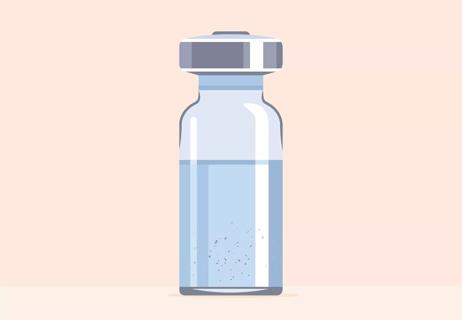These terms are becoming outdated as providers turn to an ‘integrative’ approach instead

Complementary medicine, alternative medicine, conventional medicine, Western medicine, integrative medicine … whoa, that’s a lot of medicine-related terms to parse through. How are you supposed to know what’s what? And more importantly, how can you possibly know what’s right for you?
Advertisement
Cleveland Clinic is a non-profit academic medical center. Advertising on our site helps support our mission. We do not endorse non-Cleveland Clinic products or services. Policy
We’re here to help. We’ve asked two physicians who specialize in wellness and preventive health to walk us through some of these common terms and to explain what those practices entail.
Importantly, they also outline why the healthcare community is increasingly moving toward an integrative approach to medicine — one that treats not just your medical conditions, but one that also cares for you as a whole person, incorporating different types of evidence-based therapies to care for all of you.
When it comes to healthcare terms, “complementary medicine” and “alternative medicine” are ones you’ll hear pretty often. But what do they really mean? (Hang on.) And is there any difference between them? (Yes.)
Both of these terms refer to the use of natural remedies, mind-body practices and bodywork to promote health and healing. Some of these practices, like acupuncture and massage, have been used for thousands of years.
Importantly, these practices have historically been considered outside the norm of Western medicine (also called conventional or mainstream medicine), which refers to the type of healthcare you’re most used to in North America — healthcare practitioners whose treatments rely heavily on options like medication and surgery.
Advertisement
Increasingly, though, there’s evidence to show the very real health benefits of many of these complementary practices.
“These therapies rarely cure conditions, but they frequently can improve symptoms, improve patients’ quality of life and help contribute to the treatment of chronic disease,” says Robert Saper, MD, MPH, Chair of Wellness and Preventive Medicine.
Complementary and alternative medicine are often lumped under the acronym “CAM” because they both refer to the same types of practices. But the difference is in how these practices are used:
The terms used to be used interchangeably. But “alternative medicine” now has a very specific meaning that doesn’t apply to the majority of people — and isn’t supported by research-driven, science-believing healthcare providers.
“These days, the term ‘alternative medicine’ is really saved for people who only pursue alternative therapies — and often ones that are not evidence-based — in lieu of conventional medicine,” Dr. Saper clarifies.
The term “complementary medicine” is also falling out of favor, for reasons we’ll explain shortly. For the sake of explanation, though, we’ll still use the term “complementary therapies” here so you know when we’re referring to practices that have typically fallen outside the realm of conventional Western medicine and that are used in combination with mainstream medical practices.
Rather than just seeing complementary therapies as add-ons to mainstream medicine, integrative medicine combines the best of both worlds to treat all of your needs.
“Integrative medicine refers to the concept of using evidence-based, mainstream medicine and evidence-based complementary therapies in a coordinated fashion,” Dr. Saper explains. “It also emphasizes healthy lifestyle habits like nutrition and stress management.”
Some of this seems like a bit of a no-brainer, right? Like, of course diet, exercise and stress management are related to your health! But in the past, Western medicine hasn’t always taken a whole-person approach to care, instead treating medical issues without fully considering the entirety of the individual who’s experiencing them.
“One of the essential aspects of integrative medicine is taking a holistic approach to care — in other words, a whole-person approach,” adds integrative medicine specialist Naoki Umeda, MD. “In integrative medicine, considering the mind-body connection is critical.”
Advertisement
Here’s an example of integrative medicine in action: A cancer patient is receiving chemotherapy and radiation (conventional therapies) to shrink their tumor. But these treatments cause pain and fatigue, so they also pursue acupuncture and gentle yoga (complementary therapies) to help relieve some stress and discomfort.
Dr. Saper looks forward to the day when we don’t have to differentiate between evidence-based mainstream and complementary medicine. “My hope is that eventually, this integrative approach will just be seen as good medicine — evidence-based and patient-centered.”
An integrative approach to medicine, including research-backed complementary therapies, is for everyone, even healthy people. But it can be especially helpful if you have a long-term (chronic) or complex condition.
“Integrative medicine specialists attempt to understand the underlying cause of your condition by looking at your body and mind,” Dr. Saper states. “Your provider can better care for you when they know the unique strengths and problems you face in all areas of your life — biological, psychological, social and even spiritual.”
Here are three major areas of medicine where an integrative treatment approach has been shown to be helpful:
Advertisement
What about other conditions? “Using an integrative approach — a mix of scientifically sound conventional and complementary therapies — can maximize your healing potential,” Dr. Saper says. Complementary therapies may help with other chronic conditions like:
Advertisement
“There used to be a large amount of misunderstanding and mistrust between mainstream doctors and so-called ‘alternative’ practitioners, but in the last few decades, that’s reduced greatly,” he continues. “Now, we’re seeing more collaboration, more research and the formation of more interdisciplinary medical teams.”
It’s totally possible (and even pretty likely) that you already have some experience with complementary therapies. Have you ever gotten a massage, gone to a yoga class or taken a multivitamin? Bingo! But those are just a few of many.
“Integrative medicine techniques support your body’s natural ability to heal, reducing stress and promoting a state of relaxation that leads to better health,” Dr. Umeda says. “Incorporating one or more of these practices into your healthcare regimen can help you regain control of your well-being.”
Complementary therapies fall into three categories: natural remedies, mind-body practices and bodywork. Here’s a rundown of what they include.
If it’s natural, it’s safe, right? Well, not necessarily. The word “remedy” is a bit of a misnomer, too, as these practices won’t cure you — and some may even be unsafe.
But with a healthcare provider’s guidance, substances found in nature may help maximize your nutrient levels and optimize your health.
An important note: Vitamins, minerals and herbal supplements aren’t regulated by any government entity, and some of them may interact negatively with other medications you take. “Before using these products, you should always work with a licensed healthcare provider so you know whether they’re safe for you,” Dr. Saper adds.
The term “mind-body practices” refers to therapies that get your brain and body in alignment, helping to meld and advance both your mental and physical health.
“Bodywork” refers to therapies that use your own body to influence your health and well-being. It includes:
Under the direction of a trained provider, science-backed complementary therapies are typically very safe and with minimal risk. But there are definitely some things you should know.
This bears repeating: Complementary therapies can help you feel better, but they won’t cure major illnesses. It’s important to also pursue conventional Western medical care. And for acute care and medical emergencies, you should always seek help from your primary care or an emergency medicine physician.
“Integrative medicine physicians don’t replace your primary care provider or specialist,” Dr. Umeda stresses. “Integrative medicine care should be used in concert with your regular medical treatments.”
To coordinate care and avoid confusion, your providers should communicate their recommendations with one another.
For example, the U.S. Food and Drug Administration (FDA) doesn’t regulate vitamins, dietary supplements or herbal remedies, so they’re not legally required to meet quality or purity standards.
“A company can market a supplement without any studies that show it is safe or effective,” Dr. Saper warns.
There can be variations between brands and dosages, and they may also interfere or interact with important prescription medications. Always speak with a licensed healthcare provider before taking supplements of any type.
Traditional Western medicines and surgical treatments are carefully studied and extensively tested, and ongoing research shows their effectiveness. But there hasn’t been as much research demonstrating that all complementary therapies are effective.
“Integrative physicians do not encourage the use of complementary therapies without appropriate evidence to support their use,” Dr. Umeda adds.
Listen closely because this one is really important. In today’s internet-connected world, there are lots of people out there who claim to be experts in complementary therapies but who do not have the training or licensure to back it up — so it’s critical that you do your own research, use keen judgment and choose providers with solid credentials.
Dr. Saper recommends starting with the Academic Consortium for Integrative Medicine and Health, a group of more than 70 academic health centers and health systems with members across North America and around the world.
“To be part of this consortium, members must have educational, scientifically based research and clinical programs in integrative medicine,” he explains. “Seeing if you live near one of those is a great first step to finding a qualified provider.”
He also recommends looking for providers who are certified by the American Board of Integrative Medicine®, offered by the American Board of Physician Specialties®. This certification demonstrates that they’ve “mastered the core competencies necessary to provide the best medical care possible.”
And stay away from ‘alternative medicine’ providers who encourage you not to pursue traditional healthcare alongside complementary therapies.
“You want to find a clinician who actively collaborates with mainstream healthcare practitioners and who does not offer quick ‘magical’ or ‘miracle’ cures to diseases and conditions,” Dr. Saper advises.
Ask your primary care provider how an integrative approach can help you. Be sure to voice any concerns you may have about what they do, how effective they are and any side effects they might have.
And if you’re thinking of stopping conventional medicine prescriptions and trying an alternative approach instead, Dr. Saper and Dr. Umeda urge you to reconsider. Remember that although these therapies may help you feel better, they won’t cure major illnesses. Instead, ask your provider about an integrative approach that melds a combination of evidence-based therapies.
“Our goal is to work together with all members of your healthcare team to heal your mind, body and spirit,” Dr. Umeda says, “A whole-person approach is critical.”
Learn more about our editorial process.
Advertisement

This supercharged oxygen treatment is unregulated and may do more harm than good

This alternative medicine is based on the premise that diluted ingredients will treat symptoms

Learn about its benefits, uses and side effects, including its ability to turn your skin blue

Both can help reduce pain, but they’re very different in terms of origins, philosophies and practices

Natural doesn’t mean they’re safe or effective

The high-fat diet can be beneficial for those who have obesity or diabetes

Beyond smelling great, essential oils can also help improve your health and mood

Type 2 diabetes isn’t inevitable with these dietary changes

Applying a hot or cold compress can help with pain